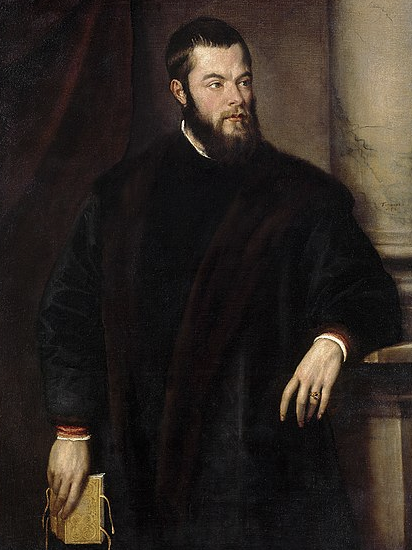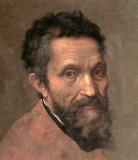Benedetto Varchi Timeline
Created by Dino Franco Felluga on Thu, 10/12/2023 - 14:47
Part of Group:
 This timeline is designed to present the details of Benedetto Varchi's life and career.
This timeline is designed to present the details of Benedetto Varchi's life and career.
Timeline
Chronological table
| Date | Event | Created by | Associated Places | |
|---|---|---|---|---|
| 6 Mar 1475 to 18 Feb 1564 |
MichelangeloMichelangelo Buonarroti was an Italian High Renaissance artist and architect who is most famous for his marble sculptures, fresco paintings, and sonnets. He was born the second of five sons in Caprese, Italy on March 6, 1475. Although it is believed his father opposed it, as he belonged to the minor nobility in Florence, Michaelangelo became Domenico Ghirlandaio’s apprentice at thirteen (Florence’s most prominent painter) despite it being somewhat of a social downgrade. Having “nothing more to learn”, Lorenzo de Medici, the ruler of the city, became Michelangelo's patron and surrounded him with his ancient Roman statuary art collection and prominent poets, scholars, and humanists. In 1501 he was commissioned to sculpt David for the Florence cathedral. Using a forty-year-old reused block and modeling it in the classical Roman model, Michelangelo perfectly presented the idealized human form of the Renaissance. Working alongside Leonardo da Vinci, he painted a fresco for the Sala del Gran Consiglio for the Florence city hall. Besides his paintings and sculpture, he received permission from the Catholic Church to study cadavers for anatomy and dedicated his more than 300 poets and sonnets to a widow named Vittoria Colonna (although Michaelangelo never got married himself). He was the most documented artist of the time and was the first Western artist to have a biography (three in fact) of him published while he was still alive. Among his most famous works are David, Pieta, Moses, Madonna, Child with the Infant St. John, and Crucifixion of St. Peter. The fresco paintings in the Sistine Chapel in the Vatican which he painted between 1508 and 1512, included scenes from the Old Testament featuring “complex, twisting poses and its exuberant use of colour, is the chief source of the Mannerist style.” He remained the head architect of St. Peters cathedral until his death in 1564. (304)
“Michelangelo.” Encyclopædia Britannica, Encyclopædia Britannica, Inc., https://www.britannica.com/biography/Michelangelo. The National Gallery, London. “Michelangelo.” Michelangelo (1475 - 1564) | National Gallery, London, https://www.nationalgallery.org.uk/artists/michelangelo. “Michelangelo.” Biography.com, A&E Networks Television, 4 Mar. 2020, https://www.biography.com/artist/michelangelo. |
Valentina Montes | ||
| 1530 |
Fighting for the Republic of FlorenceWith his return to Florence, Benedetto Varchi fought in the defence of the temporarily revived Republic of Florence, during the siege by the Mediceans and imperialists in 1530, and was exiled after the surrender of the city |
Dino Franco Felluga | ||
| circa. 1567 to circa. 1643 |
Claudio Monteverdi and L’Orfeo Claudio Monteverdi worked for Saint Mark's Basilica, or Basilica di San Marco, from 1613 until his death in 1643. This image shows the interior of the Basilica facing east in the western gallery. Claudio Monteverdi was an Italian composer who played a key transitional role between Renaissance and Baroque music and is known for the development of opera. He was baptized in 1567 in Cremona, Northern Italy. Presumably, Monteverdi received musical education, though no records of any teaching remain beyond attributions in his first compositional collection at age 15. When he was 24, he moved to Mantua to work for Duke Vincenzo I Gonzaga of Mantua. Vincenzo held him in high regard, and in 1601, Monteverdi became the highest-ranking musician in Vincenzo’s court. Throughout this time, Monteverdi continued publishing his work, including madrigals, canzonettas, and other musical forms. In 1606, L’Orfeo was commissioned, and the opera gave two performances the following spring. Monteverdi’s L’Orfeo is the oldest surviving work of opera that is still performed today. In other words, it is the “first opera that actually ‘works’” (NPR). It is a retelling of the Greek Orpheus and Eurydice myth, and clear storylines, along with its innovative polyphony use, create the compelling insight into human emotion that made it so successful in its time. However, as Monteverdi was attacked for his progressive use of harmony and musical modes, he toiled on his compositional work, and as his personal life became more stressful, Monteverdi began to seek alternative employment. When Duke Vincenzo died in 1612, Monteverdi was dismissed. He found employment as a maestro at the basilica of San Marco in Venice, where he wrote religious work while still fulfilling secular commission work. After outside problems like war and plague caused uncertainty in Monteverdi’s world, he became a priest in 1632. The first open house in Europe opened in 1637, and after this, Monteverdi contributed three new works to the stage in 1640, 1641, and 1643. In 1643, he died and was buried in Venice. (300) Sources: Arnold, Denis Midgley. “Claudio Monteverdi.” Encyclopædia Britannica, Encyclopædia Britannica, Inc., 25 Nov. 2021, https://www.britannica.com/biography/Claudio-Monteverdi. Carter, Tim, and Chew Geoffrey. “Monteverdi [Monteverde], Claudio.” Grove Music Online, Oxford Music Online, 2001, https://www-oxfordmusiconline-com.pointloma.idm.oclc.org/grovemusic/view.... “The Root of All Opera: Monteverdi's 'Orfeo'.” NPR, NPR, 8 Jan. 2010, https://www.npr.org/2010/01/08/122328598/the-root-of-all-opera-monteverd.... |
Emilia Gibbs |


